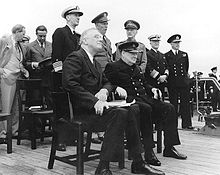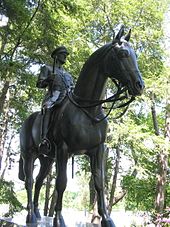Quick Facts

Biography
Field Marshal Sir John Greer Dill GCB, CMG, DSO (25 December 1881 – 4 November 1944) was a senior British Army officer with service in both the First World War and the Second World War. From May 1940 to December 1941 he was the Chief of the Imperial General Staff (CIGS), the professional head of the British Army, and subsequently in Washington, D.C., as Chief of the British Joint Staff Mission and then Senior British Representative on the Combined Chiefs of Staff (CCS), played a significant role during the Second World War in the formation of the "Special Relationship" between the United Kingdom and the United States.
Early life
Born in Lurgan, County Armagh, Ireland in 1881, his father was the local bank manager and his mother was a Greer from Woodville, Lurgan. Always intended for a career in the services, Dill attended the Methodist College Belfast, Cheltenham College and the Royal Military College at Sandhurst. On 8 May 1901 he was commissioned as a second lieutenant into the 1st battalion the Leinster Regiment and was posted to South Africa to see out the Second Boer War.
Military career
Dill was appointed regimental adjutant on 15 August 1906, having previously been assistant adjutant from 1902. Promoted captain on 12 July 1911, he was seconded to study at the Staff College, Camberley from 1 February 1913, and was still there on the outbreak of the First World War. He became brigade-major of the 25th brigade (8th division) in France where he was present at Neuve Chapelle. By the end of the war he was a brigadier-general and had been Mentioned in Despatches eight times. From the spring of 1918 he was Head of Operations (Oa) at GHQ, an important promotion after the sacking of many of Field Marshal Haig's senior staff after the Battle of Cambrai. He was appointed a Companion of the Order of St Michael and St George (CMG) in the 1918 New Year Honours. He also received a number of foreign decorations for his service, including the Officer of the Legion of Honour, the French Croix de guerre, Commander of the Order of the Crown of Belgium, Officer of the Order of the Crown of Romania.
After the war he gained a reputation as a gifted army instructor. In the 1928 New Year Honours he was appointed a Companion of the Order of the Bath (CB). In 1929 he was posted to India and in 1930 was promoted to major general before returning to appointments at the Staff College (for in fact the third time but this time as Commandant) and then to the War Office as Director of Military Operations and Intelligence, holding that post until 1 September 1936. Alongside his other positions, he was appointed to the largely honorary role of Colonel of the East Lancashire Regiment on 24 December 1932.

Dill was appointed Director of Military Operations and Intelligence in 1934 and then General Officer Commanding British forces in Palestine on 8 September 1936, holding the post until 1937. He was knighted in the 1937 Coronation Honours with his promotion to Knight Commander of the Order of the Bath (KCB), and he was then appointed General Officer Commanding, Aldershot Command but at the outbreak of the Second World War he initially had to watch younger, junior officers be promoted over him. Seen as something of a dinosaur and poorly regarded by both Winston Churchill and Leslie Hore-Belisha, Secretary of State for War, Dill was eventually posted as commander of I Corps in France on 3 September 1939. He was promoted to general on 1 October 1939 (with seniority backdated to 5 December 1937). On returning to the UK in April 1940, Dill was appointed Vice Chief of the Imperial General Staff (and a member of the Army Council), under CIGS William Ironside, by the then Prime Minister Neville Chamberlain. On 27 May 1940, after Chamberlain had been replaced by Churchill, Dill replaced Ironside as CIGS.
Dill was promoted field marshal on 18 November 1941, but by this time it was clear how poorly he and Churchill got on. Dill gained a reputation as unimaginative and obstructionist. Keen to get him out of the way, Churchill at the end of 1941 had Dill advanced to Knight Grand Cross of the Order of the Bath (GCB) and posted him to Washington as his personal representative where he became Chief of the British Joint Staff Mission, then Senior British Representative on the Combined Chiefs of Staff. He showed a great flair as a diplomatic military presence. In 1943 alone he attended the Quebec Conference, the Casablanca Conference, the Tehran Conference and meetings in India, China and Brazil. He also served on the Combined Policy Committee set up by the British and United States governments under the Quebec Agreement to oversee the construction of the atomic bomb.
In the United States he was immensely important in making the Chiefs of Staff committee – which included members from both countries – function, often promoting unity of action. He was particularly friendly with General George Marshall and the two exercised a great deal of influence on President Roosevelt who described Dill as "the most important figure in the remarkable accord which has been developed in the combined operations of our two countries".
Death

Dill served in Washington until his death from aplastic anaemia in November 1944. His funeral arrangements reflected the great professional and personal respect and affection that he had earned. A memorial service was held in Washington National Cathedral and the route of the cortege was lined by some thousands of troops, following which he was interred in Arlington National Cemetery, where a simple service was conducted at the graveside. A witness recorded that "I have never seen so many men so visibly shaken by sadness. Marshall's face was truly stricken ...". He was sorely missed by the American Joint Chiefs of Staff, who sent a fulsome message of condolence to their British colleagues:
We feel we share equally with you the loss to our combined war effort resulting from the death of Field Marshal Sir John Dill. His character and wisdom, his selfless devotion to the allied cause, made his contribution to the combined British-American war effort of outstanding importance. It is not too much to say that probably no other individual was more responsible for the achievement of complete cooperation in the work of the Combined Chiefs of Staff.
... we have looked to him with complete confidence as a leader in our combined deliberations. He has been a personal friend of all of us ...
We mourn with you the passing of a great and wise soldier, and a great gentleman. His task in this war has been well done.
He was posthumously awarded an American Distinguished Service Medal in 1944 as well as receiving an unprecedented joint resolution of the United States Congress appreciating his services. The equestrian statue on Dill's grave is one of only two at Arlington National Cemetery, the other is Major General Philip Kearny's.
Position on the use of poison gas during the Second World War
In 2013, Robert Harris and Jeremy Paxman, in their book, A Higher Form of Killing: The Secret Story of Chemical and Biological Warfare noted that on 15 June 1940 Dill proposed the use of poison gas, noting that in the event of invasion German troop concentrations on the beaches "would present a splendid target." He withdrew his memorandum in the face of fierce criticism that Britain would be losing the moral advantage of her pledge not be the first user of such weapons, and would invite devastating retaliation from Germany's much larger stocks of poison gas.
